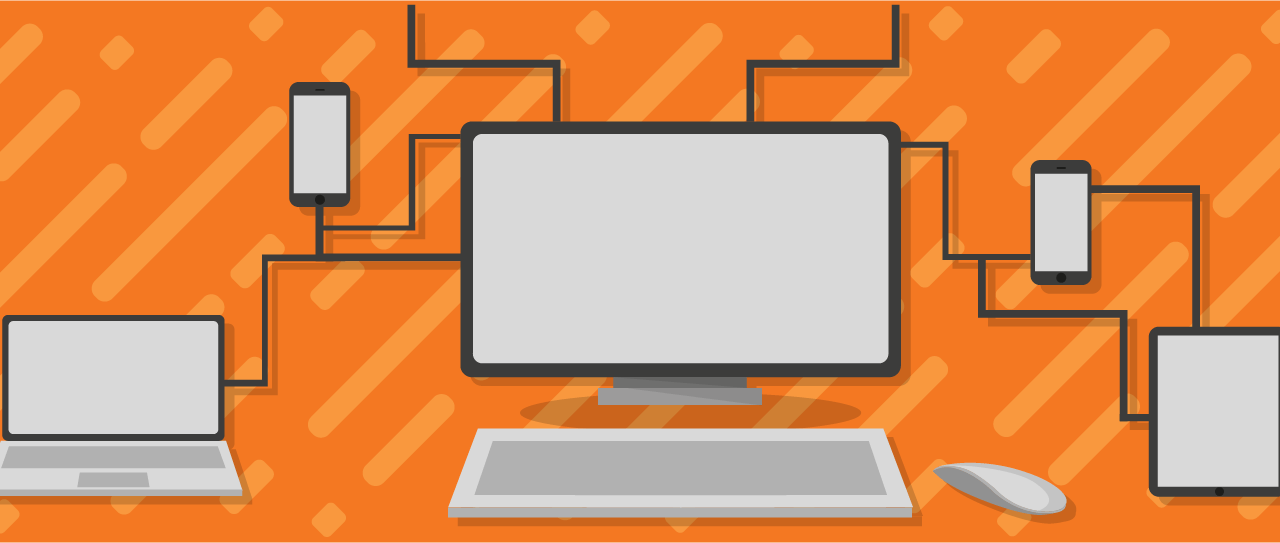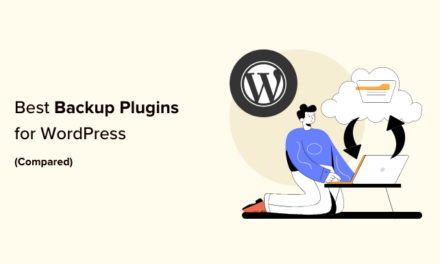With the explosive growth of connected devices and only so many IP addresses to go around, the internet as we know it could have ground to a halt a few years ago. Fortunately, IPv6 arrived just in time to rescue the World Wide Web.
Oct 2020: We tested all the best WordPress hosts! Find out how we compare.
Before I talk about why IP addresses are so important for the future of your business (and the internet), let’s back up a little…
In 1798, English cleric and scholar Thomas Robert Malthus argued that exponential population growth and arithmetic food supply would lead to catastrophic results for the global human population.
In other words, people would soon outgrow their food supply and start wars.
Less than 200 years later, we narrowly escaped a global crisis of Malthusian proportions as the World Wide Web ran out of IP addresses.
This was partly caused by the exponential growth of devices demanding their own IP address and only a limited supply of addresses being available.
Thankfully, this story has a happy ending, as a bunch of technology Jedi managed to intervene just in time and save us from impending doom.
This, then, is the story of IPv6 and the rescue of cyberspace.
In this post we cover:
- IPv6: What is it and Why Do You Need it?
- A Not So Long Time Ago, In A Galaxy Not So Far, Far, Away…
- The Problem: No Fixed (IP) Address
- The Solution: IPv6
- IPv4 vs IPv6 – Challenges
- The Benefits Of Using IPv6
- Future-Proofing Your Web Presence With IPv6
- IPv6-Enabled Web Hosting
- 340 Undecillion Reasons To Use IPv6

IPv6: What is it and Why Do You Need it?
An internet protocol (IP) is the set of rules governing how packets are transmitted over a network.
IP addressing requires that every node of an Internet Protocol network (e.g. a computer, router, or network printer) be assigned an IP address for each network interface.
This IP address is then used to locate and identify the node in communications with other nodes on the network.
Translated from Aurebesh, this basically means that every device on the internet needs an IP address to talk to another device.
A Not So Long Time Ago, In A Galaxy Not So Far, Far, Away…
When the internet was first conceived, no one could foresee just how many devices would end up having to talk to each other.
Until recently, IPv4 was the core protocol used to group and transmit data over the Internet and it still routes most Internet traffic today.
IPv4 uses a 32-bit address space, however, which limits the number of unique hosts to just under 4.3 billion addresses.

The Problem: No Fixed (IP) Address
Now, 4.3 billion IP addresses may have sounded like a lot when a billion still meant a million millions (not one thousand million!), but consider this:
Out of those 4.3 billion IPv4 addresses, large blocks were reserved for special uses and were unavailable for public allocation.
So, right off the block, the block of publicly available IP addresses was already diminished to about 3.7 billion IP addresses.
Aggravating this problem is IPv4 address exhaustion, a condition where the depletion of available IP addresses had been anticipated since the 1980s, when the commercialization of the internet began in earnest.
Several factors have aggravated this depletion, such as:
- The inefficient allocation of far more addresses to organizations than actually required.
- The worldwide growth of internet connections that are always active and never switched off (e.g. broadband internet access).
- And most significantly, of course – the growth of mobile devices.
Mobile phones are like any other device on the internet, and also require an IP address in order to talk to other internet-enabled devices.
You can immediately see what the problem with IPv4 is when you consider the fact that 4.78 billion people have a mobile phone.
So, already people have more mobile phones today than there are unique IPv4 addresses available for their devices.
Take that with a pinch of salt and a grain of Malthus and you’ve got a whiskey risky recipe for disaster.

Now, add all the ‘smart’ devices in the IoT (Internet of Things) world that need their own IP address too, and you can see now why the World Wide Web could have easily been worn out by IPv4 address exhaustion (I’m fatigued just writing about it).
And to think that Malthus was only worried about humans running out of food.
Had he lived another 150 years or so, he would be seriously tossing and turning in his sleep as millions of future wannabe social influencers were selfielessly denied access to the last available IP addresses.
Then, everything changed…
The Solution: IPv6
The anticipated shortage of IPv4 addresses led to the creation and adoption of several new technologies, including network address translation (NAT), Classless Inter-Domain Routing (CIDR), and IPv6.
Note: In case you’re wondering “whatever happened to IPv5?” (and IP versions 0 to 3…).
Although IPv5 was developed as a means of streaming video and voice data, and serving as a foundation for the development of technologies such as voice-over-IP (VoIP).
It never became an official protocol because it used the same 32-bit addressing as IPv4 – which means it would have suffered with the same 32-bit limitations.
Effectively, IPv5 ran out of steam as IPv4 became exhausted.
As far as the other IP versions go, according to Wikipedia, IP versions 0 to 3 were experimental versions (according to Wookieepedia, however, the IPv1 is an Imperial patrol vessel designed to be very fast and maneuverable, great for fighting pirates, but it lacked a hyperdrive).
But I’ve digressed, so let’s get back on route…
The IPv6 protocol uses a 128-bit address and has eight segments separated by colons of four hexadecimal digits that can be any hexadecimal value between 0 and FFFF.
Even if you think the above sentence sounds like Astromech Binary, you can tell just by looking at an IPv6 address that it’s much bigger and more powerful than IPv4…

How much bigger is IPv6 than IPv4 you ask?
If you were to distribute $4.3 billion to every man, woman, and child in Canada, they’d get less than $120 each. That’s pish-posh dosh. So…4.3 billion? Pffft.
IPv6, however, with its 128-bit address space allows for, wait for it…(stupidly huge number alert:) 340 undecillion unique IP addresses. We’re talking about 340 trillion trillion trillion IP addresses.
“If you had a job that paid you 390 trillion dollars per hour (US) you would have to work 24 hours per day, 7 days per week, 365 days per year for just a little less than 100 quadrillion years to earn 340 undecillion dollars.”
Source: ITDojo.com
If the idea of earning that much money makes you uncomfortable, let me put this into perspective:
Imagine living in a Star Wars universe filled with a gazillion inhabitable planets where octillion beings can all message each other’s devices (“drink and chill? I know this jazz bar in Tatooine”).
Suspend for a moment the fact that you can land on any Star Wars planet, step out of your craft without a helmet, and just breathe normally.
Think about all the squillions of droids, clones, and smart devices that must exist throughout the Galactic Empire. How are they all communicating with each other?
Only a select chosen few can transmit packets of information across vast reaches of space using “The Force.” Everything else must be using some other form of transmission protocol.
Heck, we’ve already ran out of IPv4 addresses here on Earth even before the launch of Apple Watch. And we haven’t even tried to colonize Mars yet.
With IPv6 providing trillions and trillions and trillions of IP addresses to all corners of the Galactic Empire, however, well… that’s a whole other story.

IPv4 vs IPv6 – Challenges
Although IPv4 and IPv6 coexist on the Internet (unlike stormtroopers and the Rebel Alliance), they are not interoperable (it’s not a made-up word – it means they’re incompatible).
IPv4 and IPv6 cannot communicate with each other but they can coexist on the same network. This is known as Dual Stack.

The non-interoperability (another non-made-up word to mean incompatible) between IPv4 and IPv6 creates challenges when using certain applications and protocols.
For example, IPv6 is not compatible with FTP and requires certain extensions and workarounds for files to transfer successfully.
The Benefits Of Using IPv6
Before we look at how to set up your hosting to take advantage of IPv6, let’s take a brief look at some of the benefits of using IPv6, and the main differences between IPv4 and IPv6 addresses.
The main benefit of using IPv6 as we have just seen is having a significantly larger pool of IP addresses available.
340 billion billion billion billion IP addresses is nothing to sneeze at (there aren’t even enough human or Tauntaun noses in all the universes to do that).

Image by: foshjedi2004
Another benefit of IPv6 vs IPv4 according to Lee Howard, is faster speed (not quite the light speed of the Millennium Falcon, though.)
Here’s a couple of fun facts about IPv6:
- IPv4 addresses are separated by periods while IPv6 addresses are separated by colons.
- IPv6 addresses can be compressed to eliminate leading zeros.
Here are some examples of valid IPv6 (Normal) addresses:
2001 : db8: 3333 : 4444 : 5555 : 6666 : 7777 : 8888
2001 : db8 : 3333 : 4444 : CCCC : DDDD : EEEE : FFFF
: : (implies all 8 segments are zero)
2001: db8: : (implies that the last six segments are zero)
: : 1234 : 5678 (implies that the first six segments are zero)
2001 : db8: : 1234 : 5678 (implies that the middle four segments are zero)
2001:0db8:0001:0000:0000:0ab9:C0A8:0102 (This can be compressed to eliminate leading zeros, as follows: 2001:db8:1::ab9:C0A8:102 )
Source: ibm.com
Future-Proofing Your Web Presence With IPv6
As everything in this lonely planet of ours becomes network-connected, IPv6 is something you should definitely care about – especially if you provide any kind of web services or develop software or hardware.
To use IPv6, you need an IPv6-compatible operating system, a router with IPv6 support, and an ISP with IPv6 enabled.
You don’t need to sit in a swamp with Yoda teaching you Jedi mind tricks to test your IPv6 connectivity.
We have the internet. Just visit a site like TestMyIPv6.com.

Most modern desktop operating systems are now compatible with IPv6. When buying a new router, make sure to check your router’s specifications details to see if it supports IPv6.
Also, make sure your ISP has IPv6 set up and enabled on their end.
IPv6-Enabled Web Hosting
Like Obi-Wan Kenobi teaching young Master Luke how to take his first step into a larger world, I have tried to show you the importance of IPv6 in keeping you connected to the world at large.
Now, focus your mind, close your eyes, and read this next sentence very carefully:
When it comes to hosting your website, choose a hosting provider that supports IPv6.
With WPMU DEV’s WordPress hosting, for example, every site you host with us receives its own unique IPv6 address (not clones).
To obtain your unique IPv6 address, log into your member’s area, go to The Hub, and click on Hosting.

Select your domain, and click on the ‘Manage’ icon.

Next, click on Domains.

This brings up the Domains screen containing the settings you need to add to your DNS records.

All you need to do now is copy and paste the IP address provided as an AAAA record in your DNS records and save to update your settings.

Congrats! Your site is now IPv6 ready!

Note: The AAAA record (also referred to as a Quad-A record) converts your domain name into its corresponding IPv6 address.
This record should be used in addition to the A record wherever possible, as it represents the best practice and can lead to performance improvements.
Visit our documentation section for a complete step-by-step tutorial on adding an AAAA record to your DNS records.
340 Undecillion Reasons To Use IPv6
We’ve already suffered enough from IPv4 exhaustion, so there’s no need to extend this saga any further. Darth Malthus has been defeated.
The Galaxy has been saved. There is a new hope for the internet.
Thanks to IPv6, we now have enough IP addresses to prop up the Internet backbone and to continue to grow, spread, and awaken this force to all network-connected devices in this and many other worlds.
Remember this and you will master all you need to know:
IPv6-enabled hosting choose, you must.
If you haven’t experienced WordPress hosting at light speed yet (give or take a few parsecs), join the WPMU DEV rebel alliance by becoming a member today.
With WMPU DEV hosting there’s no shared hosting, no shared IPs, and IPv6 is automatically enabled and supported.
This keeps your site completely isolated and separate from other sites while keeping your business digitally connected with the rest of the galaxy.
May the force be with you and our hosting set you free.










